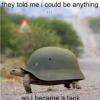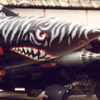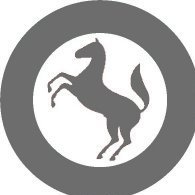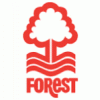Search the Community
Showing results for tags 'Westland'.
-
Hi, Just a quick question on the major external differences between the RN Westland Whirlwind HAR9 and the RAF HAR 10. Did the RN HAR 9 have the under fuselage recess for a torpedo like the earlier HAS 7? I know the RAF HAR 10 did not have this feature. I'm planning to convert the Italeri H-19 into a HAR 9 as used in the Antarctic on HMS Protector. Any help with this question greatly appreciated. Cheers, Joe
-
After the Sikorski S-51/HO3S-1 (http://www.mach2.fr/s51.htm) Mach 2 (http://www.mach2.fr/avionsg.htm) is to release a 1/72nd Westland Dragonfly HR.3 (BEA) kit - ref.GP.062 Source: http://www.aviationmegastore.com/westland-dragonfly-hr3-bea-gp062-mach-2-gp062-scale-modelling/product/?shopid=LM545799cb78d2964af7209c241a&action=prodinfo&parent_id=212&art=129299 V.P.
-
Good day everyone, I've been waiting for the start of this GB for like, forever! So am just bookmarking my page. I am going to try for 3 of the blighters, 1st will be a 1:48th Italeri Mk5 version, probably done in the sand/green box version. Next up will be TWO 1:72 Italeri versions one a Mk5 of 771 and the final one a Mk3 version which will be the blue/yellow type (I already have a Falklands Humphrey). The 48th will have an eduard etch, I'm not planning to go all 'Hendie' on it but lets see how deep I get dragged in. The small Mk5 will be OOB with some aftermarket decals and will be a red/green SAR version. The blue/yellow bird will have a new radome, exhausts and dog kennel and I am not sure which version she will be, I think I have a couple of options (I can sincerely stipulate that on no account will the Mk3 be the all over yellow type!). So that is my plan, phots to appear soon. I intend to build them together so instead of 3 different posts I will document all 3 on this post........if that is allowed mods?? So far this year I have pledged 6 builds in GB's and have achieved 5 with 15 days left to get the 6th finished (which I should do) so it would be quite unprecedented if I can keep that going. Looking forward to seeing all the varieties of this magnificent beast coming alive in this GB........ Bob
-
Hi all, I was given Airfix's new boxing of the Sea King HAR.3 for Christmas so in an effort to hit the ground running in 2017 I've decided to haul 2 older boxings from the stash and build the three together. My intention is to finish the aircraft as follows: XZ586 Sea King HAR.3, 202 Sqn A Flt., RAF Boulmer (from the new Airfix HAR.3boxing) XZ590 Sea King HAR.3, 202 Sqn A Flt., RAF Boulmer (from the old Airfix HAR.3 boxing) XV699 Sea King HU.5, HMS Gannet SAR Flight (from the Airfix HAR.5 boxing) (modified from the new Airfix HAR.3 boxing using decals & possibly some parts from the Airfix HAR.5 boxing) ZA314 Sea King HC.4, 848 NAS, RNAS Yeovilton (from the new Airfix HC.4 boxing) Mystery project (from the old Airfix HAR.5 boxing). What's already becoming incredibly clear is how far the Airfix kits have advanced between old and new boxings. I was originally going to build the old ones OOB as a quick mojo builder but I'm now debating doing some detailing to the interior. I'll stick some pics up once there's something to show Stu
-
Father Christmas has just arrived at RAF Scarborough in a Wessex HC Mk 2 of 72 Squadron with presents for the base personnel children. His transport is the Alvis Salamander crash truck which will take him to the excited children at the Christmas party at the base NAAFI complex. DO ANY OF YOU GUYS KNOW WHAT MODELS THE WESSEX AND THE SALAMANDER ARE ? Cheers, Adey
- 25 replies
-
- 17
-

-
Westland Lynx AH.7 XZ605, pics mine taken at Wattisham Heritage Museum.
-
XZ208, Pics from Greg Buckley, This is one of the options on the New Airfix kit.
-
Scaleworx is to release a 1/48th SAAF Super Lynx 300Mk.64 resin conversion set. Release expected in 2015 Source: https://www.facebook.com/scaleworx/photos/a.235132476686101.1073741852.212054182327264/387079818158032/?type=1&theater V.P.
-
Westland Wessex HAR.2 XT604 at Aeropark East Midlands, pics thanks to Dave.
-
Westland Lynx HAS.2 XX910. XX910 first flew on 23rd April 1974 as one of the pre-production prototypes of the light Lynx HAS.2, ASW helicopter. A&AEE, Boscombe Down, are believed to have used XX910 for trials of navigation equipment up to 1978, when it was transferred to the Royal Aircraft Establishment, later DERA, at Farnborough. There it was used for Seaspray radar and other avionics trials but eventually placed in storage and kept as a source of parts for use on other airframes. Acquired by The Helicopter Museum in December 2000, XX910 had never entered operational service though it had probably been involved in some of the early trials of the Sea Skua air-to-surface missile system at the RAE Aberporth range in Cardigan Bay. This helicopter was restored by volunteers from the Lynx Operations Support Team at RNAS Yeovilton.Info from Friends of The Helicopter Museum. Pics thanks to Mike Costello.
-
I love birthdays! No sprue shots, sorry, but there are heaps around on the internet. Straight into it! Instrument panel: And sink marks filled: Here the instrument panel is dry fitted onto the console, on the floor of the heli. Assembled the Sea Skua missiles And Mk 11 depth charges. At least that's what the instructions say, but the blurb on the side of the box says something about Sting Ray torpedoes, so I'm not sure what they are!? (I'm no expert on such things!) The decals look fun: I want to do the black cats version though, so I probably have to invest in some decal-settling solutions. Then I noticed this: A crack on the otherwise crystal-clear parts... Spares part has been requested! Thanks for looking!
-
Westland Lysander Mk.III 1:48 Eduard ProfiPACK The Westland Lysander is one of the famous British Aircraft which turned out to be obselete in the role it was originally designed for, but had a successful career in a role its designers could never foresee. The design stemmed from an Air Ministry requirement in 1934 for an Army Co-operation aircraft. The design team interviewed pilots to find out exactly what they wanted from the aircraft. From this emerged a design with good low speed handling characteristics, and exceptional short field performance with a good field of view. The aircraft was advanced for its time with fully automatic wing slats and slotted flaps, and variable incidence tail planes; these gave a stall speed of 56 knots. The aircraft would enter service in 1938, and at the outbreak of war five Squadrons would goto France. They turned out to make excellent targets for the Luftwaffe even with a fighter escort and were quickly withdrawn, even though they would continue to fly supply missions across the channel. Some squadrons would also be deployed in the air-sea rescue role. With the formation of the Special Operations Executive in 1941 an aircraft was needed to ferry agents back and forward to France. The Lysander with its exceptional short field performance was ideal for this job. A large ventral fuel tank was fitted to extend the range, and dark / black paint was worn for night operations. Lysanders flew from secret airfields at Newmarket and later Tempsford. Over 100 agents were transported to occupied Europe, with over 120 being returned. As well as use on Special operations Lysanders would serve as Target tugs and communications flight aircraft. The Kit This kit was originally produced by Gavia back in 2001. They have since had one re-release and this is now Eduard's forth re-release of the plastic with their own additions in the box. This time we get four sprues of grey plastic, one clear sprue, one sheet of photo-etch, some resin parts and a sheet of masks (essential given the extensive glazing on the kit). Decals are provided for five options. Construction starts in the cockpit. Given the construction of the Lysander the whole front and rear cockpits are built in a tubular frame which goes into the fuselage. The pilots seat is constructed first with the seat belts coming from the PE fret. Next up is the observes radio set and the shelf it sits on are built up. The central fuel tank assembly is next (this fits between the pilot & observer). The instrument panel is built up from PE layers and attached to the frame for the front cockpit along with the pilots seats. The observes seat and bulkhead are also built up at this time, again the seat belts coming from the PE fret. Attention the moves to the sides of the tubular cockpit frame. Here there are a number of small PE detail parts which need to be attached to each side. The main cockpit structure is then constructed using the two side frame, a front & rear bulkhead with the fuel tank assembly and observers seat assembly being sandwiched in the middle. The pilots seat assembly and flying controls are then added to the front cockpit. The last item to be added to the completed cockpit assembly is the observers guns. These are not used in all markings in the kit. For Marking C a Lewis gun is included. This is a complex affair with 10 resin and PE parts. For markings A & B there is a twin browning arrangement. This is also a complex part made from 10 parts. The Special operations aircraft carried nor rear armament. Once the cockpit section is completed it can be placed into the main fuselage and this then closed up. Attention then moves to the front of the aircraft. The Bristol Mercury engine is constructed from a central hub to which the nine individual cylinders are added along with push rods which the modeller will have to make from plastic rod. The engine is then installed into a three part cowling with the exhaust collector ring then being added to the front. The exhaust is added along with an intake vent on the underside. The instructions have you add the propeller at this stage thought I suspect most modellers will leave it off until the end. Moving back to the main fuselage the clear parts are added at this stage. Open or closed windows are provide for the pilot and the rear canopy can be open or closed. The side and top canopy parts are added at this stage due to how the wings attach at the top. The wings and tail planes are now constructed, they are of a conventional upper/lower construction but be aware there are large ejector tower marks to remove inside the wings. The wheels and spats are next to be constructed. The wheels need to be built and painted before adding onto the spats as the are partially enclosed. Masks are supplied on the sheet for painting the wheels. The landing lights are added into the front of the spats. Even though not mentioned on the instructions the special operations aircraft did not use the small wings/bomb racks on the spats. Once the wings and spats are made up they can be attached to the main fuselage. If making a special operations aircraft then the large external fuel tank needs to be made up added under the aircraft. The access ladder to the rear cockpit also needs to be added. Decals The decals have been produced in house by Eduard. The look in register and are colour dense, however are a bit thicker than other decals I have seen. Decals are provided for five aircraft. V9437 No. 309(Polish) Sqn RAF, Dunino Airfield, Scotland 1941. V9374 No. 613 Sqn RAF, 1941. T1429 No. 26 Sqn RAF, Gatwick 1940/41. V9287 No. 161 Sqn (Special Duties) RAF, Tempsford 1942. V9367 No. 161 Sqn (Special Duties) RAF, Tempsford 1944. Conclusion It is great to see this kit re-released. Highly Recommended. Review sample courtesy of
-
In 1943, the Westland Whirlwind was being withdrawn from service, one factor being lack of support for its Peregrine engines - together with the need to maintain two engines per airframe compared with the single-engined Typhoon intended to replace it. However with development of the Typhoon taking longer than expected, an interim solution was needed to support the second front expected to be opened in France in 1944. The remaining Whirlwind airframes were therefore re-engined with Bristol Mercury XVs, which were in plentiful supply and could provide enhanced performance running on 100 octane fuel. As the radial engines were air-cooled, the radiators could be removed from the wing roots making more volume and weight available for fuel tanks. The wing hard-points were strengthened, to allow carriage of two 1000lb bombs. Finally, the new MkIII IFF was fitted, the rod aerial under the starboard wing replacing the previous tailplane-to-fuselage wiring. Enough aircraft were re-manufactured to equip 263 squadron, which flew as part of 2nd Tactical Airforce over France from February 1944, until finally replaced by the Typhoon at the end of that year. ... Well, it could have happened anyway! Based on the venerable (if that is the right word!) Airfix Whirlwind, with engines from the old-tool Blenheim IV, spare propellers and spinners from the new Spitfire I/II and bombs from the Bomber resupply set. Following my reading of the regulations for D-Day stripes, and 24" wide stripes on the wings of twin-engined aircraft, as well as the 18"-wide fuselage stripes. I kept the sky band forward of the tail, and assumed the squadron codes would be re-painted over the stripes. Decals from a variety of sources, including some of the original airfix ones which had stood up pretty well for a 1980s-era kit. and a few more photos here: Westland Whirlwind FB.2
- 26 replies
-
- 26
-

-
Hi, what scale is a Sea King helicopter from Heller Humbrol Bobcat / Bobkit? Not Airfix tooling but snap fit from Heller mould. Is it 1/72 like their Super Puma Cougar and other Bobkit kits (Transall, OH-6, Harrier T4, F-16 and Phantom) or is out of scale? Thanks
- 2 replies
-
- HellerSea King
- Sikorsky
- (and 7 more)
-
Westland WS-55 Whirlwind HAR Mk.10, XD163, C/n. WA20. At the Helicopter Museum, Weston-Super-Mare. Pics mine. Originally built in 1954 at Yeovil, Somerset as a 12-seat transport helicopter. XD163 is of particular significance as it was not only converted from an earlier mark of Whirlwind, but was in fact in its earlier life the first Whirlwind delivered to the Royal Air Force, and was the first Whirlwind Mk.4. It first flew in April 1954 and operated with the Far East air force. In 1962 it was delivered to Westland's factory for conversion to Mk.10 standard. As the 36th production conversion Mk.10 XD163 first flew in February 1964 and allocated to 2FTS at the Central Flying School helicopter wing Ternhill in 1966. It remained there until 1979 when it was retired and placed in storage at RNAY Wroughton. The aircraft was subsequently transferred to the museum in April 1991 where it was restored and is now on display.Info from the The Helicopter Museum website
-
Just laying my marker down for a build of an Airfix Westland Lynx of the Royal Navy. Little surprised to find myself entering this GB, but I do have two Helo's in the stash to do so why not!?
-
I must be completely doolally. No sooner have I just finished a 7 month build than I start another, that within an hour looks like it will compete with the previous build in taking longer / driving me nuts / being expensive / show my complete ignorance in many areas, and more than likely will sap my will to live at some point. Yup, I am doing a Wessex. An HC 2 to be exact, and an HC2 from Italeri's 1/48 recent kit. No sooner had I started looking at it seriously than I noticed a whole boatload of stuff that I think will need to change. Having recently completed the RHKAAF Dauphin & Islander, I wanted a 28 Sqn stablemate to keep them company. I really hadn't planned on starting this kit so soon after the Dauphin, it just kind of happened. The original plan was to start the rail carriage which I had promised Nigel, George & Co. Over the last few months I have been addicted to Martin H's build and with the detail he is putting into his SH-34. I am in awe of the accuracy and neatness of Martin's work. I do not, in any stretch of the imagination think that I can match Martins' skill, but his thread has inspired me to try and stretch myself and try things I would not normally have attempted. I pushed the boundaries of my skill set during the Dauphin build, and I think I am going to end up pushing them further with this little adventure. Those of you who have followed any of my builds so far will no doubt have noticed that I am hopeless in trying to follow a standard build format. I envy those who can start with the flight deck, move on to wings etc. and deal with portions of the build in a structured and logical manner. - I start on one thing, get halfway through, move onto something completely unrelated and at some point later on, return to complete some half finished portion of the build. So, without further ado.... here comes a Wessex.... slowly. I had over the last year amassed this little collection. First impressions of the Italeri kit were not great. They had some nice detail in areas, however the general finish of the kit was pretty random. For example, some of the fuselage is almost polished in finish, while other parts appear as if the mold has been blasted. Some of the detail is accurate and some is just plain crazy stupid. I wasn't very impressed with the decals either.... One thing that became apparent as I mulled over this kit was although I worked on these, squirted oil, grease and PX28 all over them - I never really looked at them! (so I will no doubt need some help at various stages through this build). So let's begin...... The observant among us will have noticed in the photo up top that I have purchased the resin HC2 conversion kit. When I examined it closely, I was a bit disappointed to be honest. I thought the detail was a little soft, and it was missing a hinge at the back end. I looked at the kit part, and was happier with the definition of the detail..... Accurate resin, soft detail / Inaccurate kit part, nicer detail...... what to do ! So after splashing out mucho dollars to get the resin conversion, I decided to convert the kit part instead. Dumb huh ? Did I mention that this build is not going to be fast by anyone's standards? The first glaringly obvious difference from the kit was the oval opening on the underside. Thankfully I had some brass templates and found a match to the resin part. The template was then attached to the kit part.... ... and I cut out the offending plastic. Next up were these two features. Nope, I have no idea what they are. Styrene strips were glued to a flat card to replicate the features. Then when dry, the parts were cut down to match what I saw on the resin part. I used a 3-square file with the V down to make the strips appear thinner. These were then attached to the kit underside. I have also replicated the end of some kind of trunking, and removed some no longer required plastic features. Now I needed to block the opening off. Using the oval templates again, I created this flange. Which I capped with a scrap piece of styrene sheet. That was glued onto the underside and set aside to dry. I did some dry fitting to see what lay in store for me. The fit of the nose was pretty bad, if not downright awful. Luckily, I have a wicked and cunning plan. It's called plan B. Actually plan B should have been plan A, but I thought of plan A first even although I preferred plan B. The fit of the nose to the airframe was bad, unfortunately, so is the fit of the panels inside the nose. Despite filing and shaping, I couldn't get a decent fit and resorted to wads of blue tak to hold things in place while the glue cured. and here's where I get stupid ! Most people would have stuck the nose on the airframe and filled and sanded to make it look good. But me ??? Nope. Let's add another week to the build and we haven't even got started yet. Can you see where I am going with this? My hokey way of ensuring that I get the depth of the panel correct.... Starting to take shape. That part was reasonably straight forward. I still have the bottom section to do - it's slightly recessed and has two apertures which fit nicely over the engines. Engines ! wait... crap.... does that mean I have to scratch a couple of engines now? Who could ever be so daft??? Then I spotted two large sink marks in the base of the nose. It's anyone's guess where it goes from here. The one thing I can promise is that this will not be a quick build. I want to do this a/c as much justice as I did the Dauphin so it's going to be a long haul. And lastly..... Nigel - I have actually started the train - well, I have laid some brass bits and bobs on top of the drawing and cleared a work space for it. I am waiting on a soldering iron being delivered and then I can start a new thread.
-
Hi, hope it's ok to join in? I haven't built an egg beater for ages so this seems an opportune time to take this from the stash and have a crack at it. If anyone has any tips re this kit please let me know. Untitled by bryn robinson, on Flickr Untitled by bryn robinson, on Flickr Untitled by bryn robinson, on Flickr Untitled by bryn robinson, on Flickr
-
Hi, built for the GB on this site. Enjoyable build (though frustrating that the tail rotor blades had to be cut and repositioned the correct way!) Used some Eduard Etched brass (other bits too small for me!) Painted with Xtracolour RAF Blue Grey enamel and Gunze Mr Hobby RLM04 Yellow acrylic, with tamiya X-22 for the gloss. Thanks for looking Untitled by bryn robinson, on Flickr Untitled by bryn robinson, on Flickr Untitled by bryn robinson, on Flickr Untitled by bryn robinson, on Flickr Untitled by bryn robinson, on Flickr Untitled by bryn robinson, on Flickr
- 16 replies
-
- 23
-

-
Hi, hope it's within protocol, but I thought I'd post my current WIP from the Helicopter GB, the link is also below: http://www.britmodeller.com/forums/index.php?/topic/234999108-172-italeri-wessex-has3-updated-19th-april/ Untitled by bryn robinson, on Flickr Untitled by bryn robinson, on Flickr
- 8 replies
-
- 4
-

-
- Westland
- Wessex HAS3
-
(and 2 more)
Tagged with:
-
Hi, I am currently building the Italeri 1/72 kit, and will probably do the yellow over blue grey scheme. I believe the blue grey is RAF blue grey and can only find an Xtracolour paint. As I prefer to use acrylics (I have use of the spare room but try not to be too stinky!), anyone know of an acrylic alternative? Thanks
-
Mk.III R9125 At Hendon, pics thanks to Mark Mills. A full history of this aircraft can be found here. Painted in the markings of LX-L R9125 of No. 225 Squadron RAF
-
Imperial War Museum at Duxford, Lysander MK.III III marked as MA-J V9673, pics thanks to Mark Mills.
-
Westland Lysander Mk III. It is painted in the all black colour scheme of the clandestine SOE aircraft of 1942 and is marked as V9367 MA-B (of No. 161 Squadron RAF) the aircraft flown by Pilot Officer Peter Vaughan-Fowler, DSO, DFC and bar, AFC. Pics by Graham James at Old Warden



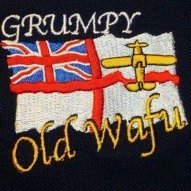
.thumb.jpg.0bac681e0da8e4ed7557610e98fda908.jpg)

